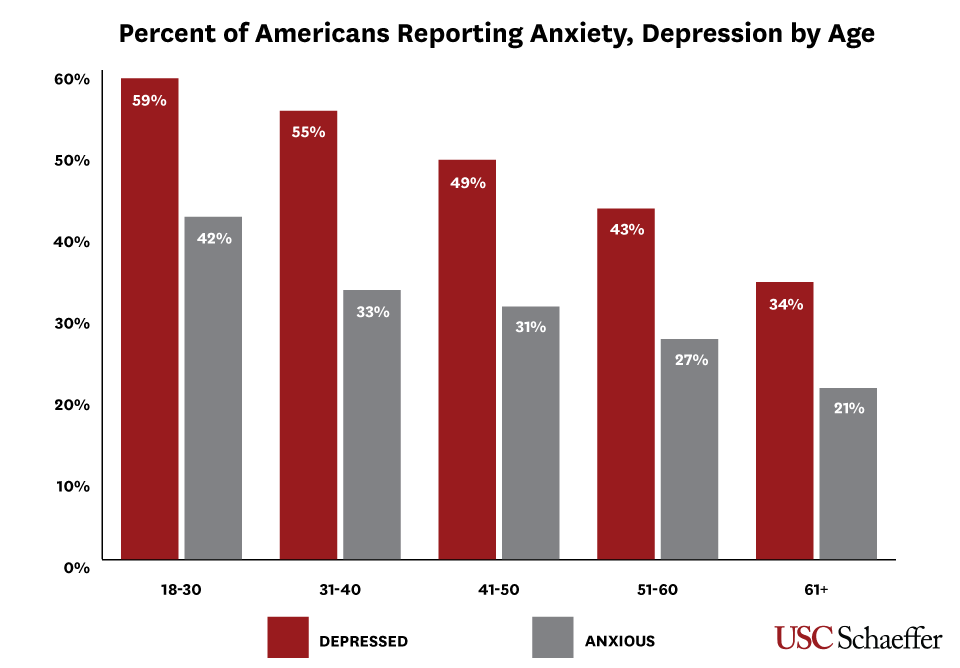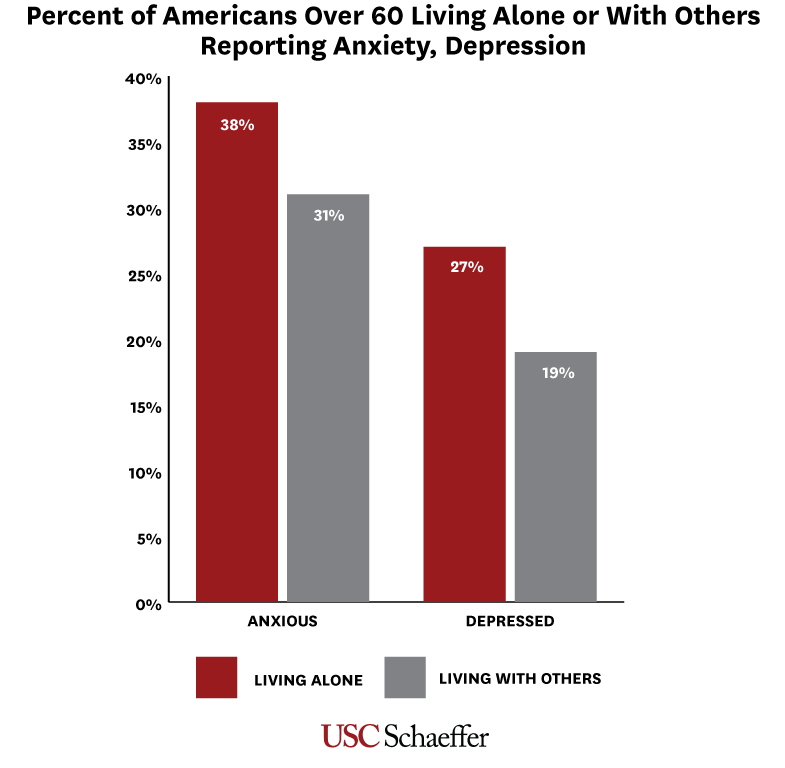Social distancing measures and stay at home orders have been expanded across the United States as the COVID-19 pandemic has intensified. To date, at least 42 states have implemented some sort of mandate urging residents to stay home.
In the United States, one-quarter of older adults live alone – more than in any other country. Social and physical restrictions may pose particular challenges for these individuals, who often rely on non- coresidential support systems for social interaction, help with getting groceries, or going to doctor appointments, and for some, help with activities of daily living such as bathing, eating and dressing. In addition, approximately 80 percent of Americans ages 65 and older live with at least one chronic condition, putting them at higher risk of dying from COVID-19 and making the stay-at-home mandates that much more salient. As social distancing measures further constrain support systems that these older individuals who live alone depend upon, this vulnerable group may experience increased loneliness, depression and anxiety as well as worsening pre-existing chronic conditions.
We analyzed the well-being of older individuals who live alone using data collected in March 2020 from the Understanding America Study, an ongoing internet-based national survey conducted by the USC Dornsife Center for Economic and Social Research.
All Adults Are Reporting Higher Rates of Anxiety and Depression

We find the percent of Americans who report feeling nervous, anxious or on edge or who report feeling down, depressed or hopeless several days over the two weeks before the survey was conducted was high across all adults, but in general declined with age. Fifty-nine percent of young adults ages 18 to 30 reported feeling nervous or anxious and 42 percent reported feeling down or depressed. This compares to 34 percent of adults over age 60 who reported feeling nervous or anxious and 21 percent feeling down or depressed.
Living Alone Adds to Feelings of Anxiety and Depression

While older adults in general reported lower rates of anxiety and depression compared to their younger counterparts, living alone was correlated with higher rates of these issues. Among adults over age 60, 27 percent reported living alone. Older adults living alone were more likely to report feeling anxious (38%) or depressed (27%) compared to older adults with other household members (31% reported feeling anxious, 19% reported feeling depressed).
Policymakers, Communities Leaders Should Develop Programs Specific to Older Adults’ Needs
Older community-dwelling adults, particularly those who live alone, may face difficulties adjusting to the imposition of safety and health measures to constrain the spread of COVID-19. They are experiencing higher rates of anxiety and depression than older adults living with others and this may negatively impact their physical health. Well-being is also being negatively affected by constraints on food availability, a reduced ability to seek medical help when health needs occur, and unmet assistance with functional limitations.
The length of time these restrictions will be in place remains unknown which makes finding solutions to support well-being now an imperative. Some cities and communities are finding answers. In Los Angeles, residents over age 60 can now get free meals delivered to their homes through the Emergency Senior Meals Response Program. At the federal level, Medicare has expanded telehealth services to all areas of the country, not just rural, and to include patients in their homes. Technology may also be used to reduce social isolation however some older adults may lack devices or an understanding of how to use them. Many older individuals who live alone rely on family member for assistance but care from them is hampered by new challenges. School closures complicate care by family members with young children. Paid caregivers increase the likelihood of exposure to the virus and this important workforce may become increasingly unavailable as numbers of persons affected by the novel virus increases. The heavy toll of physical and social distancing will require coordinated and novel policy solutions at local, state and federal levels to meet the health and social needs of older adults living alone.
About the Understanding America Survey
Calculations were based on a national survey of 5,400+ Americans conducted as part of the Understanding America Study at USC Dornsife Center for Economic and Social Research. The survey is a probability-based internet panel conducted March 10–31, 2020.

You must be logged in to post a comment.